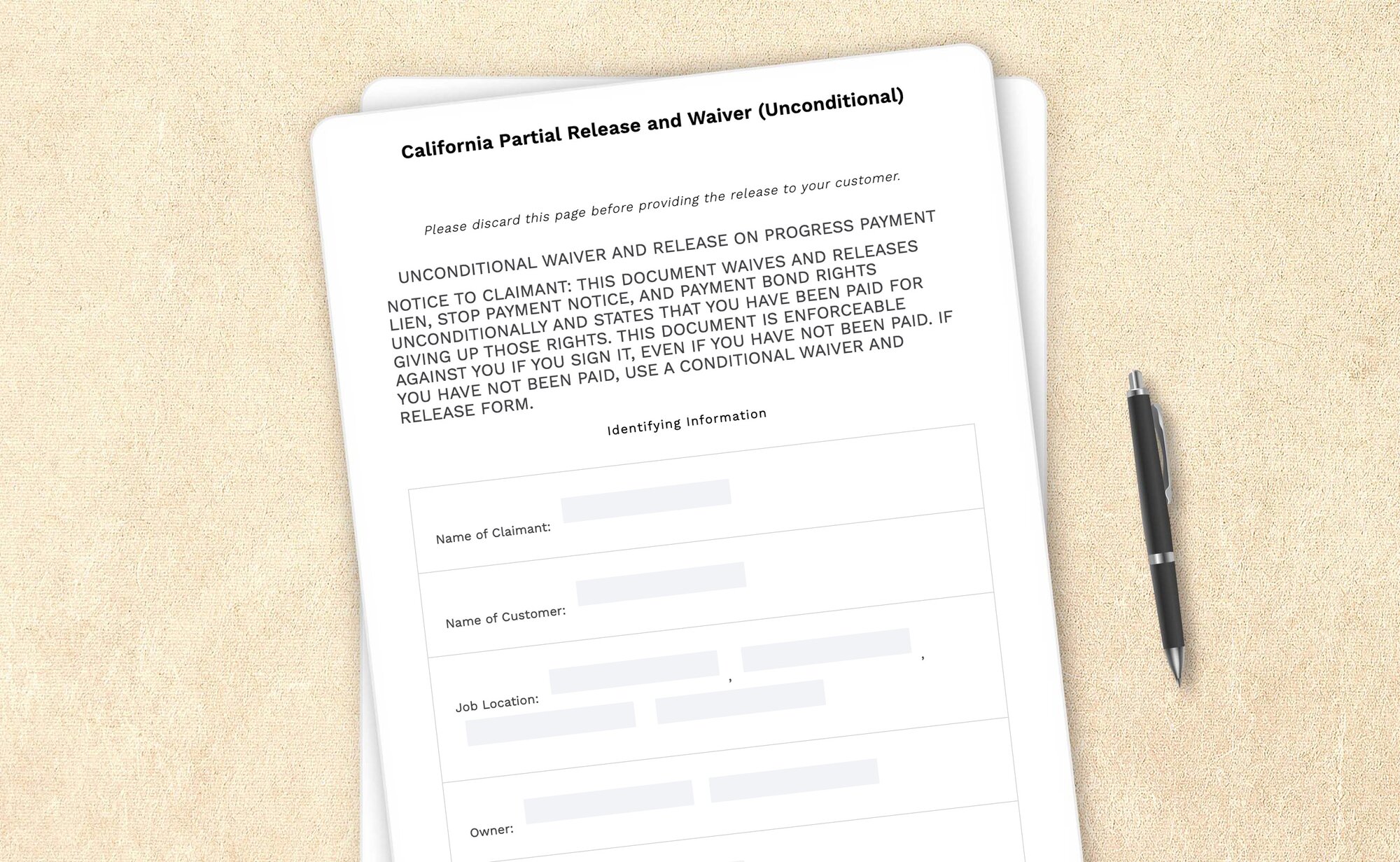Please discard this page before providing the release to your customer.
[PAGE BREAK HERE]
UNCONDITIONAL WAIVER AND RELEASE ON PROGRESS PAYMENT
NOTICE TO CLAIMANT: THIS DOCUMENT WAIVES AND RELEASES LIEN, STOP PAYMENT NOTICE, AND PAYMENT BOND RIGHTS UNCONDITIONALLY AND STATES THAT YOU HAVE BEEN PAID FOR GIVING UP THOSE RIGHTS. THIS DOCUMENT IS ENFORCEABLE AGAINST YOU IF YOU SIGN IT, EVEN IF YOU HAVE NOT BEEN PAID. IF YOU HAVE NOT BEEN PAID, USE A CONDITIONAL WAIVER AND RELEASE FORM.
Identifying Information
| add border |
|---|
| Name of Claimant: |
| Name of Customer: |
| Job Location: |
| Owner: |
| Through Date: |
Unconditional Waiver and Release
This document waives and releases lien, stop payment notice, and payment bond rights the claimant has for labor and service provided, and equipment and material delivered, to the customer on this job through the Through Date of this document. Rights based upon labor or service provided, or equipment or material delivered, pursuant to a written change order that has been fully executed by the parties prior to the date that this document is signed by the claimant, are waived and released by this document, unless listed as an Exception below. The claimant has received the following progress payment:
Exceptions
| add border |
|---|
| This document does not affect any of the following: (1) Retentions. (2) Extras for which the claimant has not received payment. (3) Contract rights, including (A) a right based on rescission, abandonment, or breach of contract, and (B) the right to recover compensation for work not compensated by the payment. |
Signature
| add border |
|---|
| Claimant's Signature: |
| Claimant's Title: |
| Date of Signature: |
How-to guides, articles, and any other content appearing on this page are for informational purposes only, do not constitute legal advice, and are no substitute for the advice of an attorney.
What's a California partial release and waiver (unconditional)?
When a homeowner or business begins construction, remodeling, or similar contract work, the contractor must know that they will be paid, and the client needs assurance that work will be completed. A California partial release and waiver (unconditional) outlines the rights and responsibilities of a contractor and the property owner, including payments and details about what’s been done and what still needs to be done. Keep the contract work moving toward completion by confirming a partial payment. To create your document, use the template above.

Here's the information you'll need to have handy to complete your California partial release and waiver (unconditional):
- Location: Know the site location and address where the project work is being done
- Dates: Be clear about the contract's timeline, especially the "through date"
- Payment: Know the payment amount and the names of all parties being paid
If you want another sample agreement template that could be used for partial release and waiver with a conditional clause, use LegalZoom’s California partial release and waiver (conditional) template for an affordable price.
